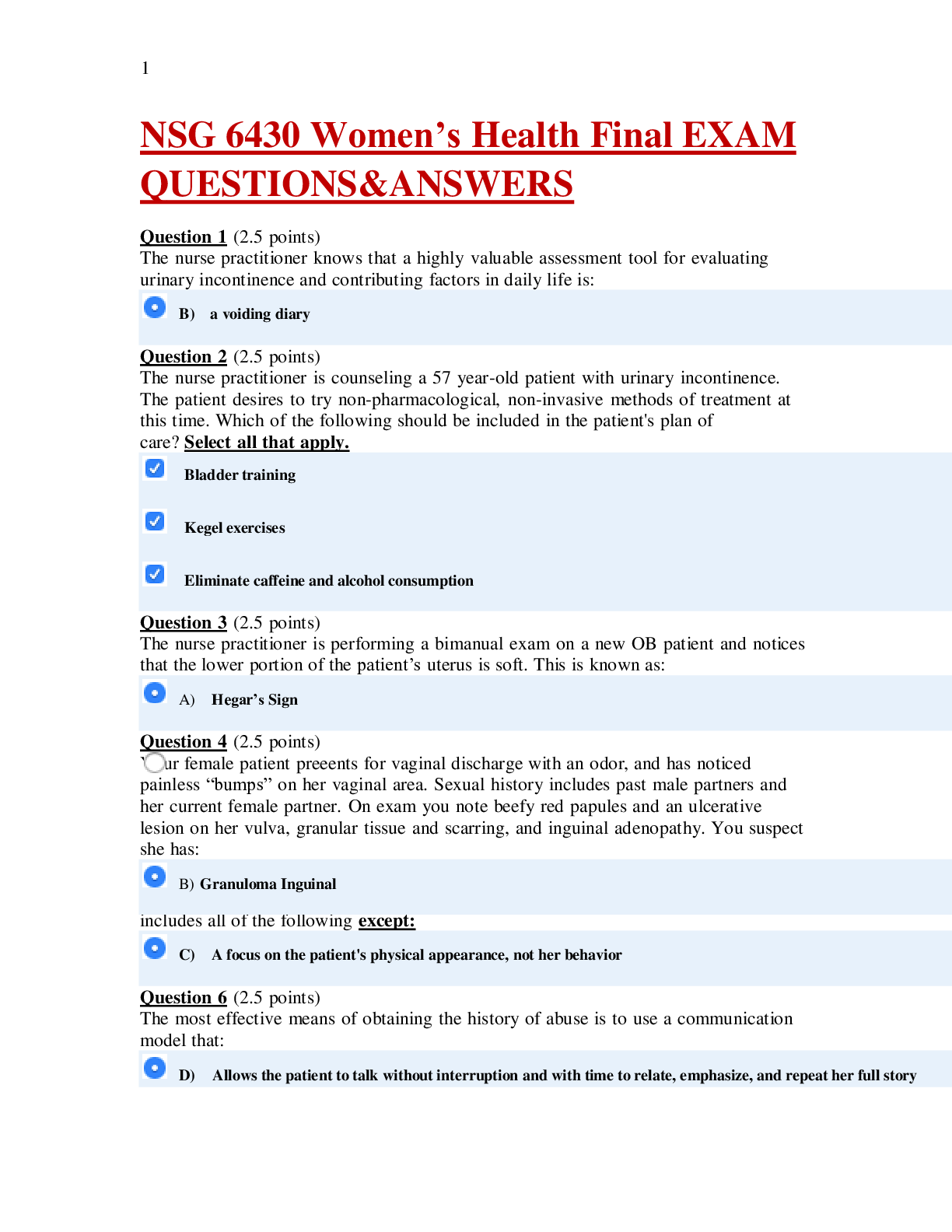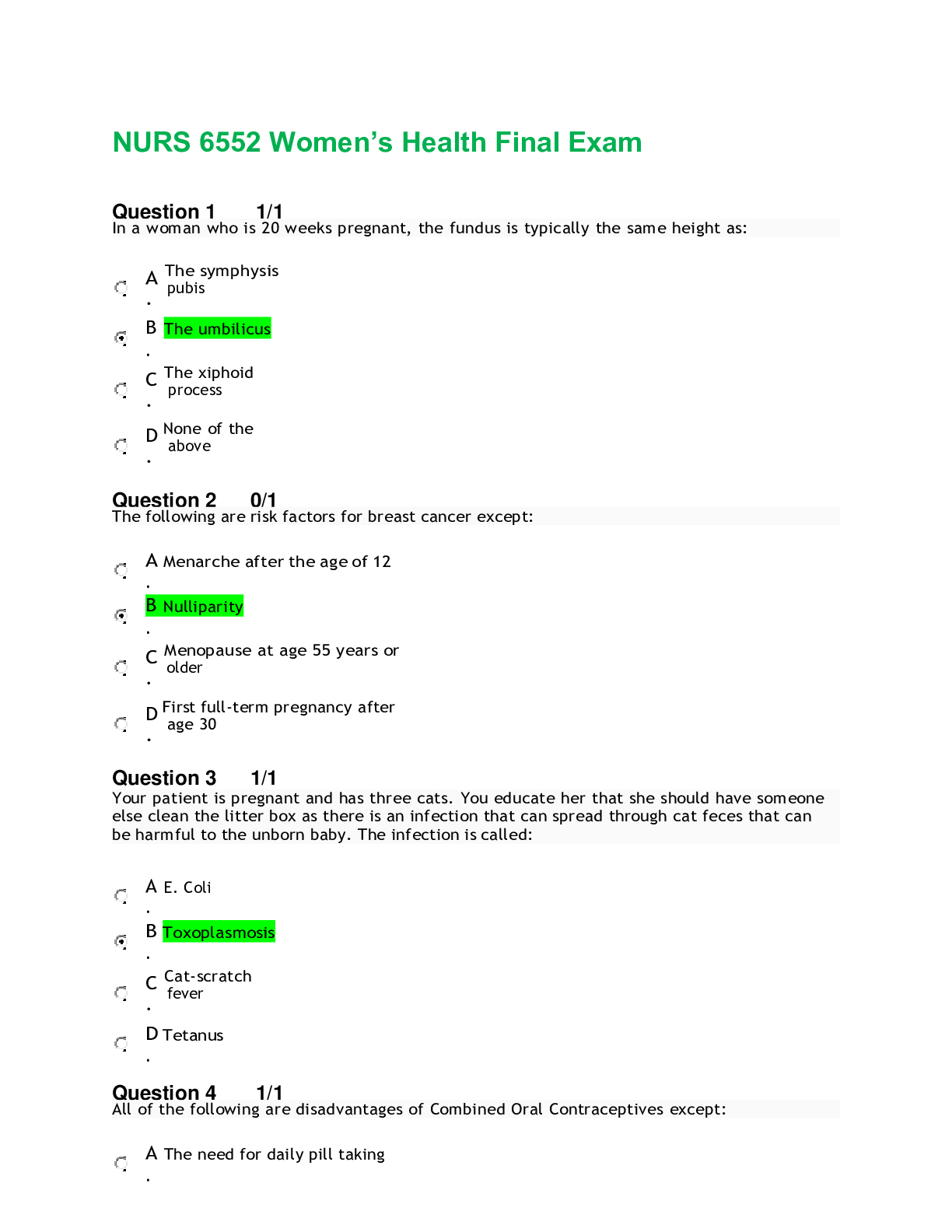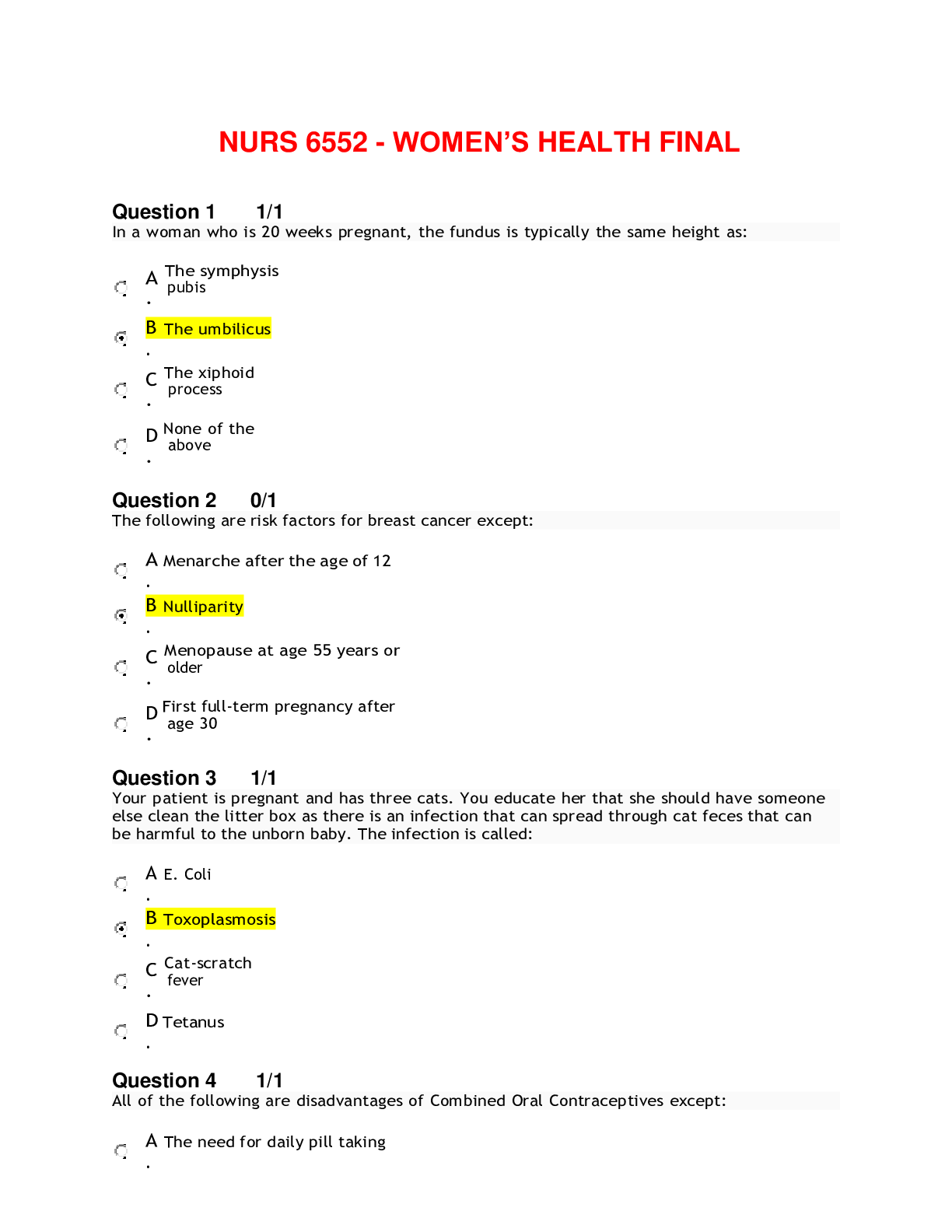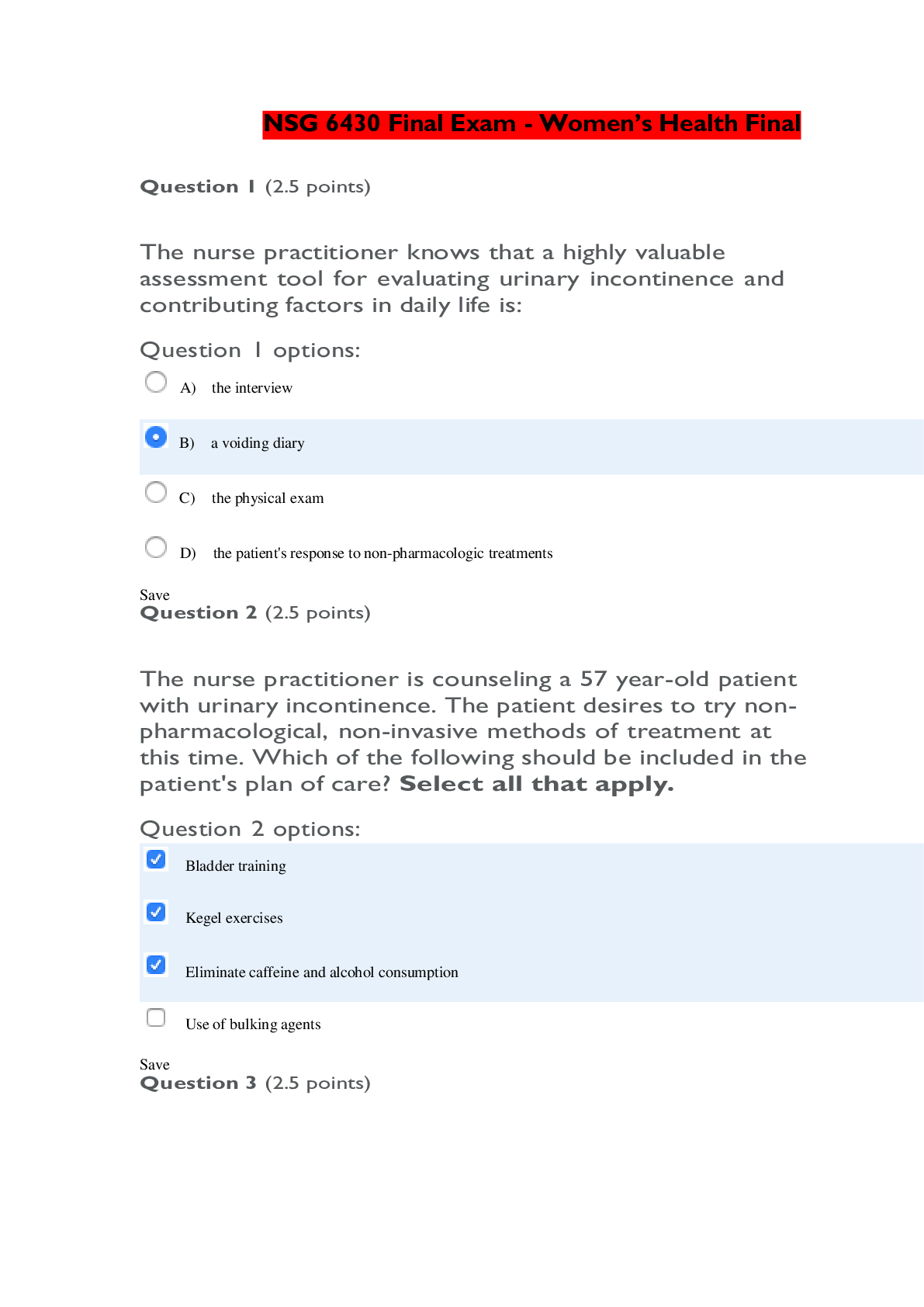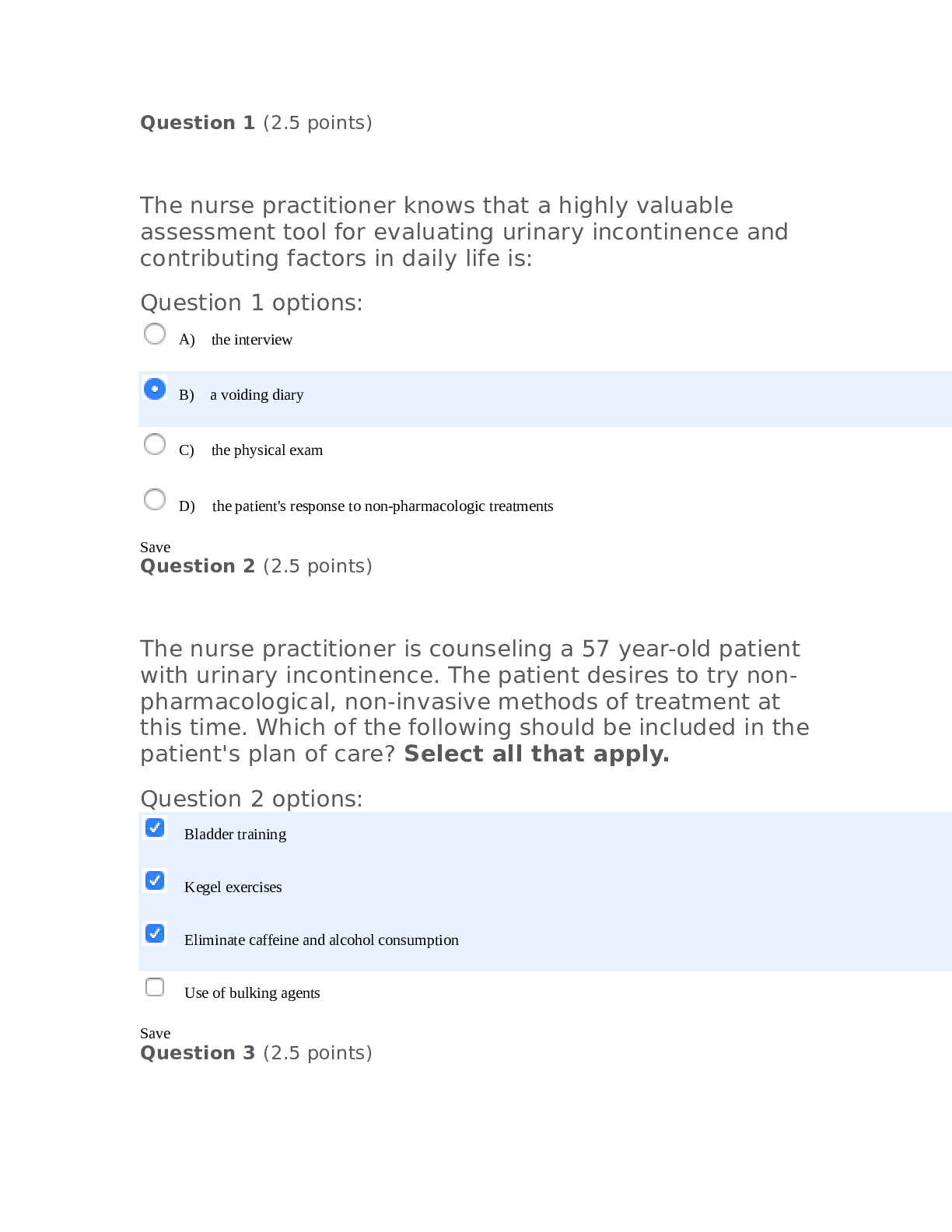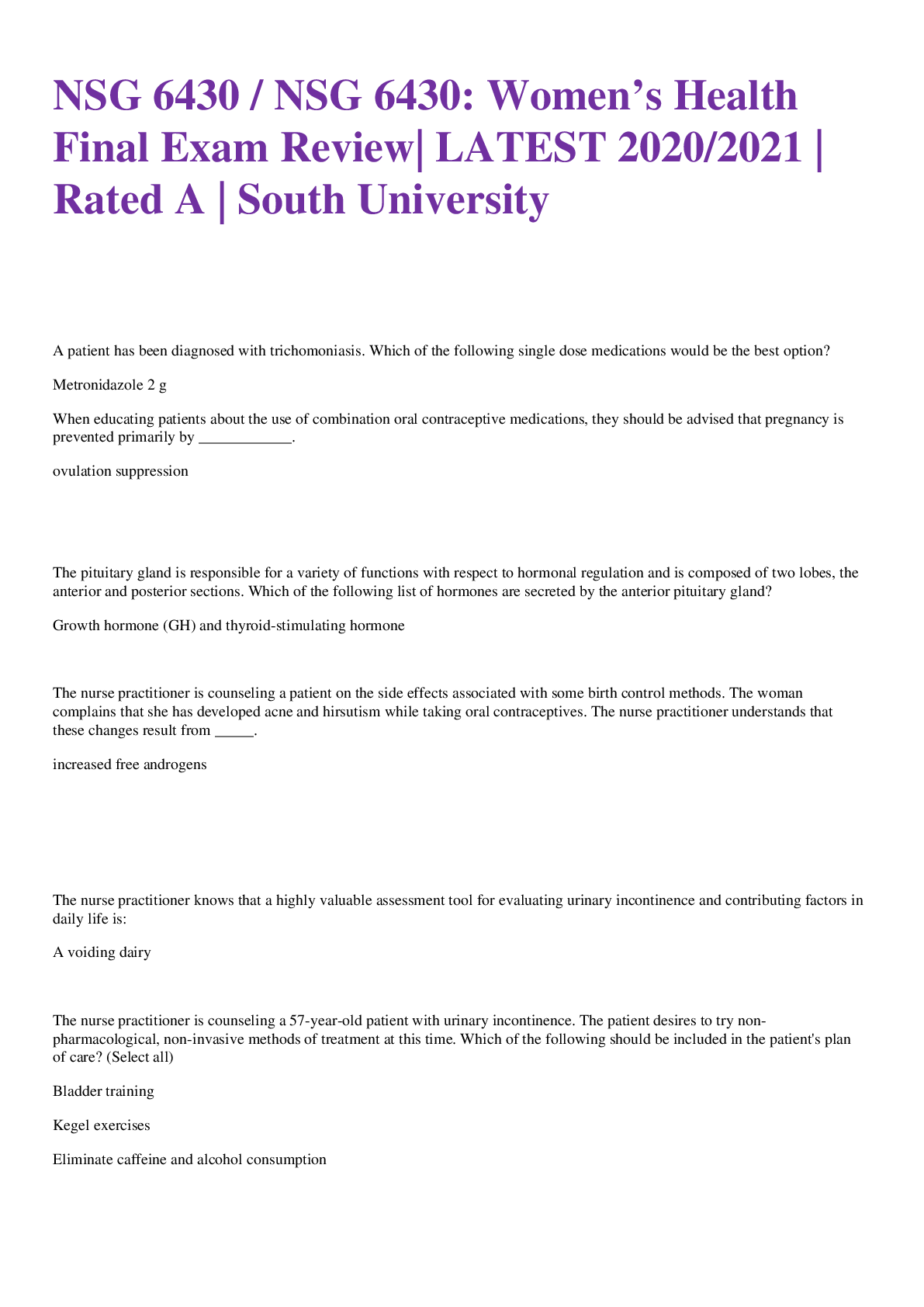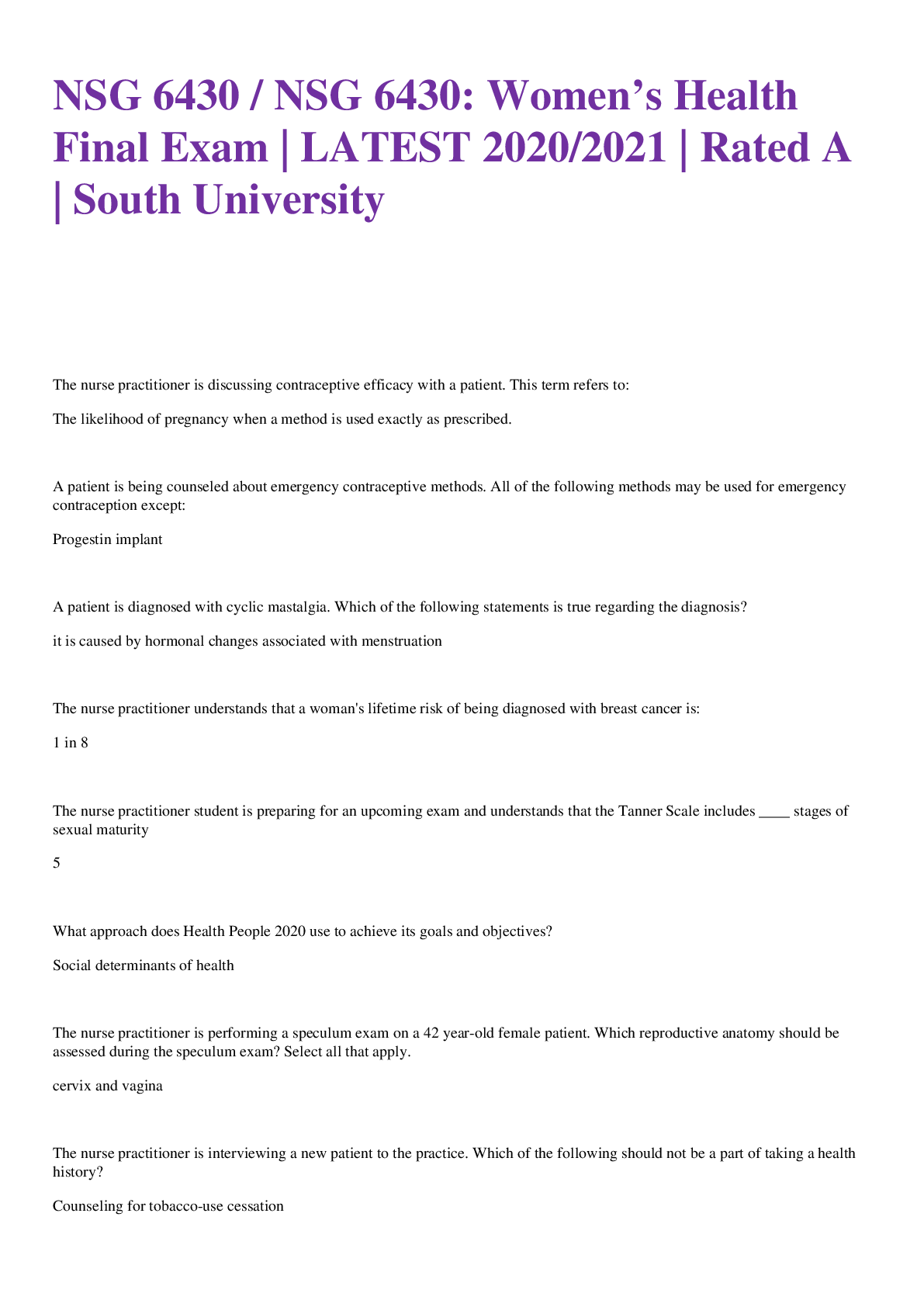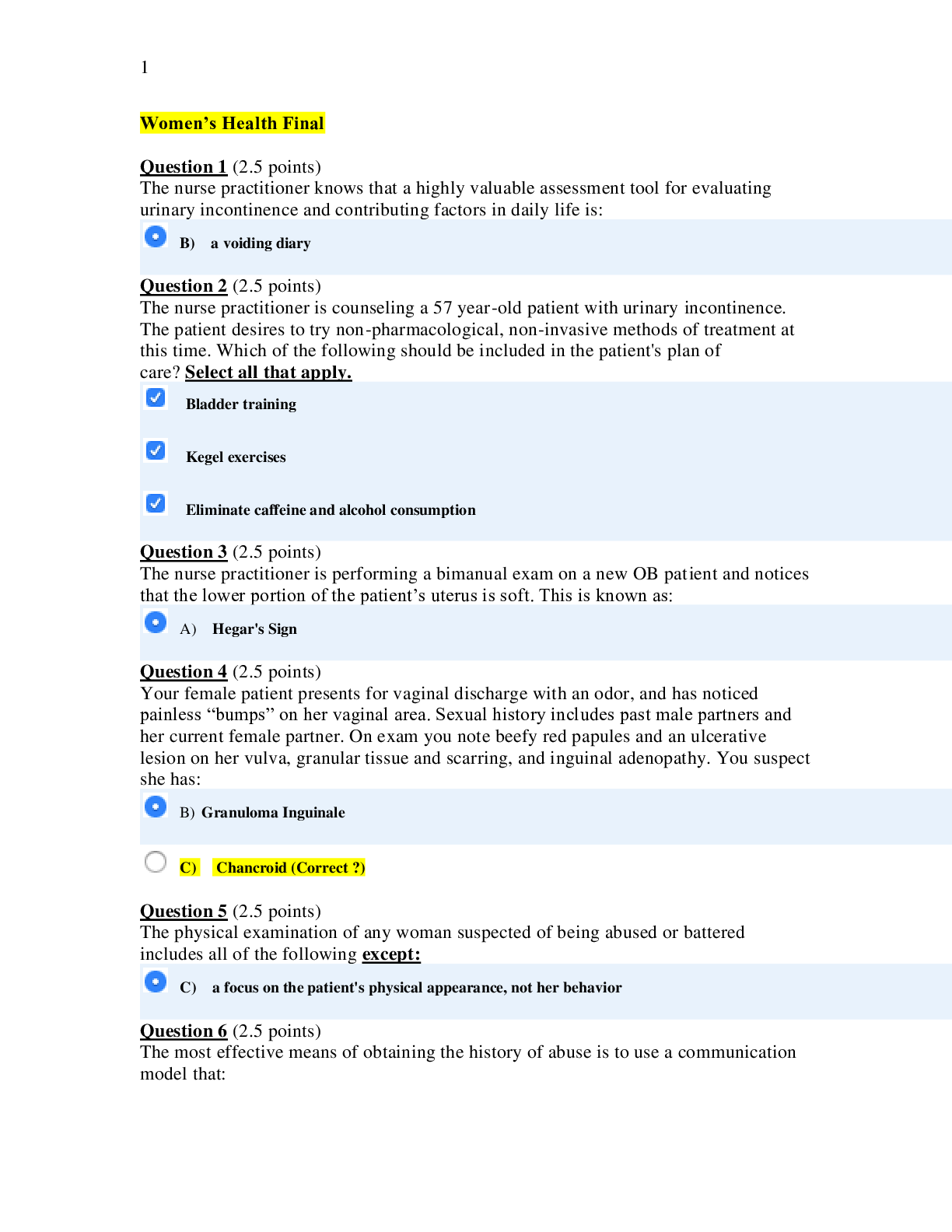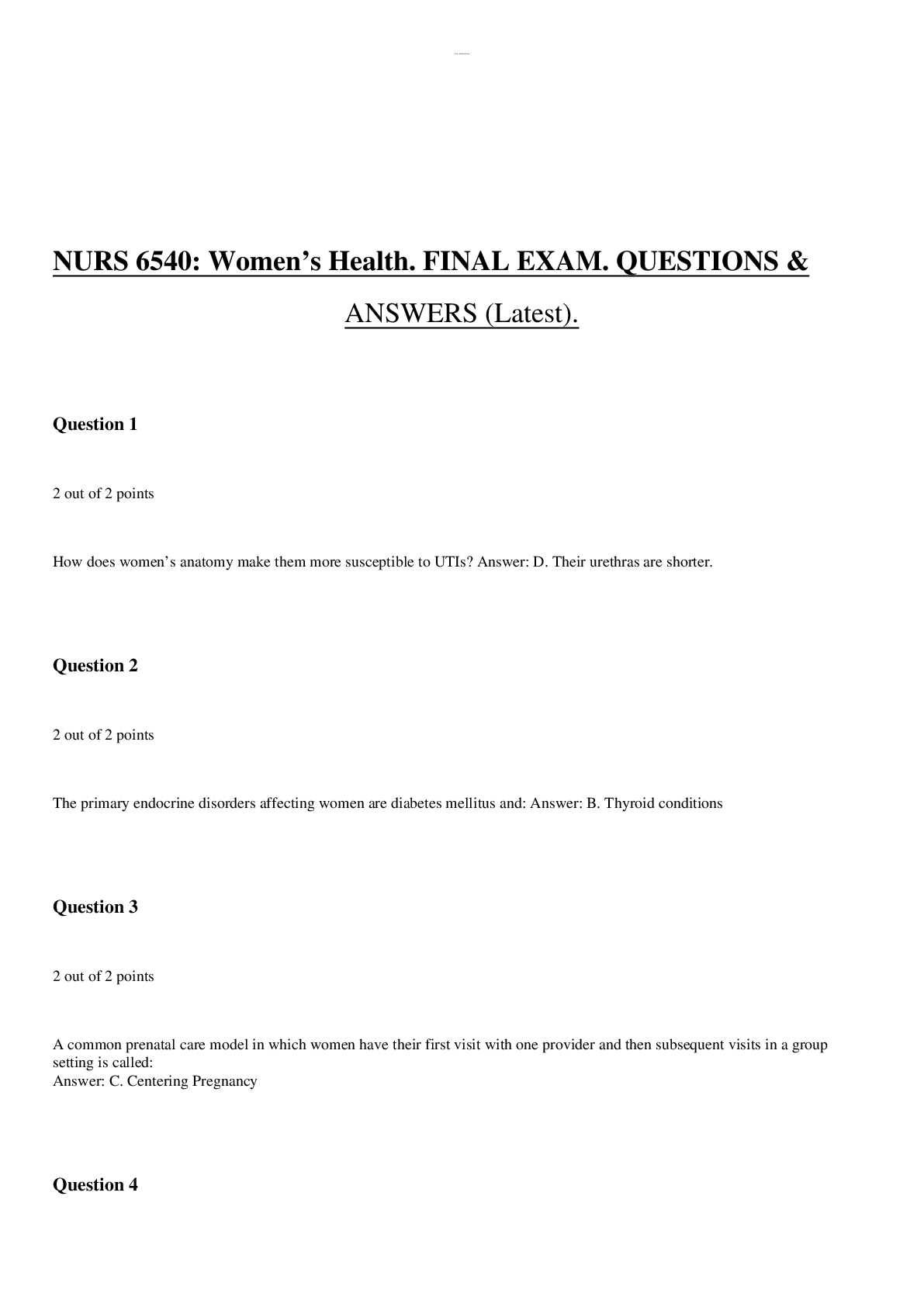NSG 6430 Women’s Health Final Exam
Document Content and Description Below
Question 1 (2.5 points) The nurse practitioner knows that a highly valuable assessment tool for evaluating urinary incontinence and contributing factors in daily life is: B) a voiding diary ... Question 2 (2.5 points) The nurse practitioner is counseling a 57 year-old patient with urinary incontinence. The patient desires to try non-pharmacological, non-invasive methods of treatment at this time. Which of the following should be included in the patient's plan of care? Select all that apply. Bladder training Kegel exercises Eliminate caffeine and alcohol consumption Question 3 (2.5 points) The nurse practitioner is performing a bimanual exam on a new OB patient and notices that the lower portion of the patient’s uterus is soft. This is known as: A) Hegar's Sign Question 4 (2.5 points) Your female patient presents for vaginal discharge with an odor, and has noticed painless “bumps” on her vaginal area. Sexual history includes past male partners and her current female partner. On exam you note beefy red papules and an ulcerative lesion on her vulva, granular tissue and scarring, and inguinal adenopathy. You suspect she has: B) Granuloma Inguinale C) Chancroid (Correct ?) Question 5 (2.5 points) The physical examination of any woman suspected of being abused or battered includes all of the following except: C) a focus on the patient's physical appearance, not her behavior Question 6 (2.5 points) The most effective means of obtaining the history of abuse is to use a communication model that: D) allows the patient to talk without interruption and with time to relate, emphasize, and repeat her full story Question 7 (2.5 points) Clinicians should routinely consider intimate partner violence (IPV) as a possible diagnosis for women who present with all of the following except: B) denial of any physical health problems Question 8 (2.5 points) The factors that enable women to enjoy and control their sexual and reproductive lives, including a physical and emotional state of well-being and the quality of sexual and other close relationships, make up a woman's: A) sexual health Question 9 (2.5 points) Which one of the following is not among the ways clinicians can provide a welcoming, safe environment for Lesbian, Gay, Bixsexual, or Transgender (LGBT) patients? C) Ignore the sexual status or gender identity of all patients. Question 10 (2.5 points) Which one of the following is the definition of the term "gender identity"? B) A self-label, regardless of biologic or natal sex Question 11 (2.5 points) Which one of the following statements about sexually transmitted infections (STIs) is false? A) Lesbians are at very low risk for development of STIs and vaginal infections. Question 12 (2.5 points) Among the midlife health issues of women, the number one cause of mortality in the United States is: B) cardiovascular disease Question 13 (2.5 points) Lifestyle approaches to manage menopause related vasomotor symptoms include: Question 13 options: B) avoiding spicy foods, hot drinks, caffeine, and alcohol Question 14 (2.5 points) The standard for managing moderate to severe menopausal symptoms is: Question 14 options: D) prescription systemic hormone products, such as estrogen and progestogen Question 15 (2.5 points) The nurse practitioner is managing an adolescent with a 4 cm functional ovarian cyst that was confirmed on a recent ultrasound. What plan of care should be anticipated for this patient? C) Repeat ultrasound in 2 months Question 16 (2.5 points) Non-pharmacologic therapy for chronic pelvic pain includes the following: Select all that apply. B) Physical therapy C) Aerobic and nonaerobic exercise Question 17 (2.5 points) The nurse practitioner understands that all of the following organisms are responsible for infection of the Bartholin's gland except: Klebsiella (Correct ?) Staphylococcus aureus Question 18 (2.5 points) Treatment of a large, symptomatic Bartholin's cyst includes all of the following except: Topical corticosteroids Question 19 (2.5 points) A 44 year-old African American female presents with complaints of menorrhagia x 15 months. Pelvic ultrasound confirms the presence of a large intramural leiomyomata. The nurse practitioner should discuss all of the following options with the patient except: Estrogen therapy Question 20 (2.5 points) The nurse practitioner is treating a patient with Elimite for scabies. The proper instructions to the patient should include: Apply to all areas of the body from the neck down, wash off after 8 to 14 hours, then repeat treatment in one week Question 21 (2.5 points) The nurse practitioner understands that the proper management of an asymptomatic woman with a small fibroid should include: Reassess in 6 to 12 months. Question 22 (2.5 points) The nurse practitioner is teaching a patient about pediculosis. Which of the following statements by the nurse practitioner is correct? “The condition is treated with Permethrin cream.” Question 23 (2.5 points) All of the following medications may be used for neuropathic pain management of vulvodynia, except: Methotrexate Question 24 (2.5 points) The nurse practitioner understands that which of the following lab tests is appropriate for the patient who presents with symptoms of dysesthetic vulvodynia? RPR Wet mount Question 25 (2.5 points) Which of the following is a common antibiotic for treatment of an infected Bartholin's cyst? Bactrim Question 26 (2.5 points) The patient presents with complaints of a painful, swollen lump in her vaginal area. She reports difficulty sitting and walking due to the pain. Which of the following is a likely diagnosis for this patient? Bartholin's cyst Question 27 (2.5 points) The nurse practitioner understands that which of the following are differential diagnoses in an adult female patient with acute pelvic pain. Select all that apply: A) Ectopic pregnancy B) Appendicitis C) Ovarian cyst with rupture Question 28 (2.5 points) When women experience mild premenstrual symptoms, such as mild breast tenderness, abdominal bloating, and mild weight gain from water retention, this is known as: Question 28 options: Premenstrual syndrome Question 29 (2.5 points) A patient with intraductal papilloma will commonly present with a chief complaint of: A palpable mass Bloody nipple discharge Question 30 (2.5 points) The nurse practitioner understands that the necessary screening techniques in a patient suspicious of ovarian cancer should include the following: Select all that apply. CA-125 Transvaginal ultrasound Bimanual pelvic exam [Show More]
Last updated: 1 year ago
Preview 1 out of pages

Reviews( 0 )
Document information
Connected school, study & course
About the document
Uploaded On
Mar 23, 2021
Number of pages
Written in
Additional information
This document has been written for:
Uploaded
Mar 23, 2021
Downloads
0
Views
5

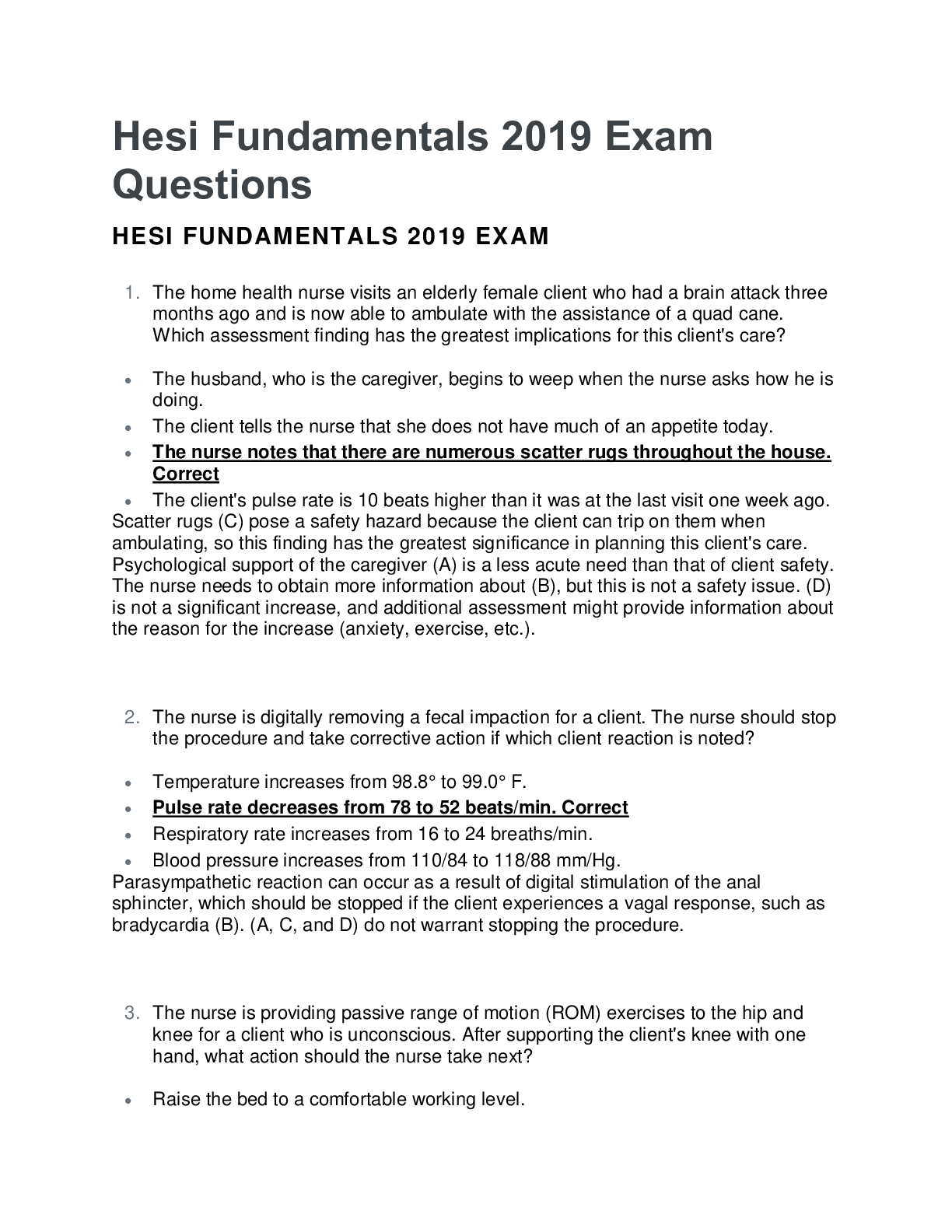
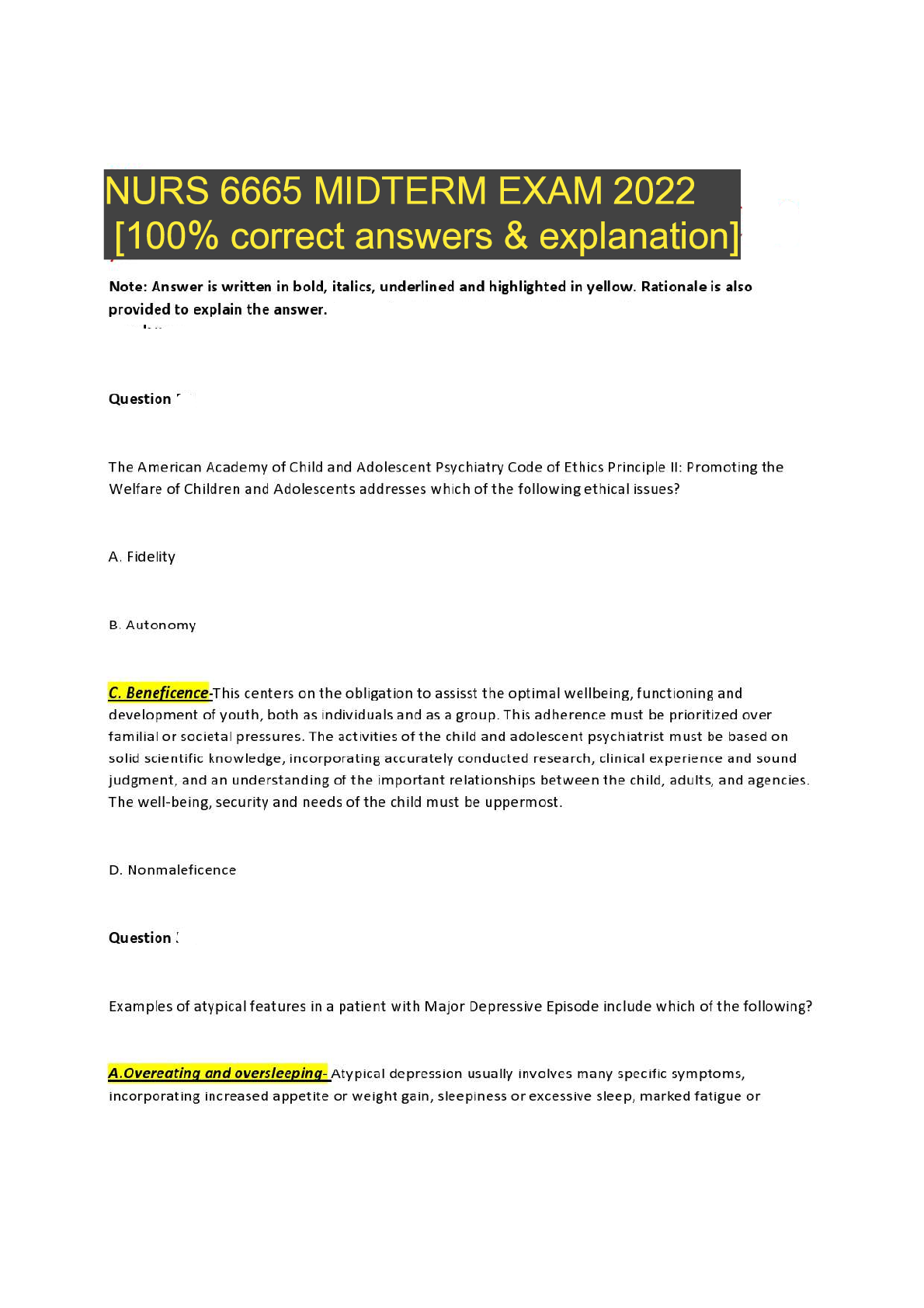
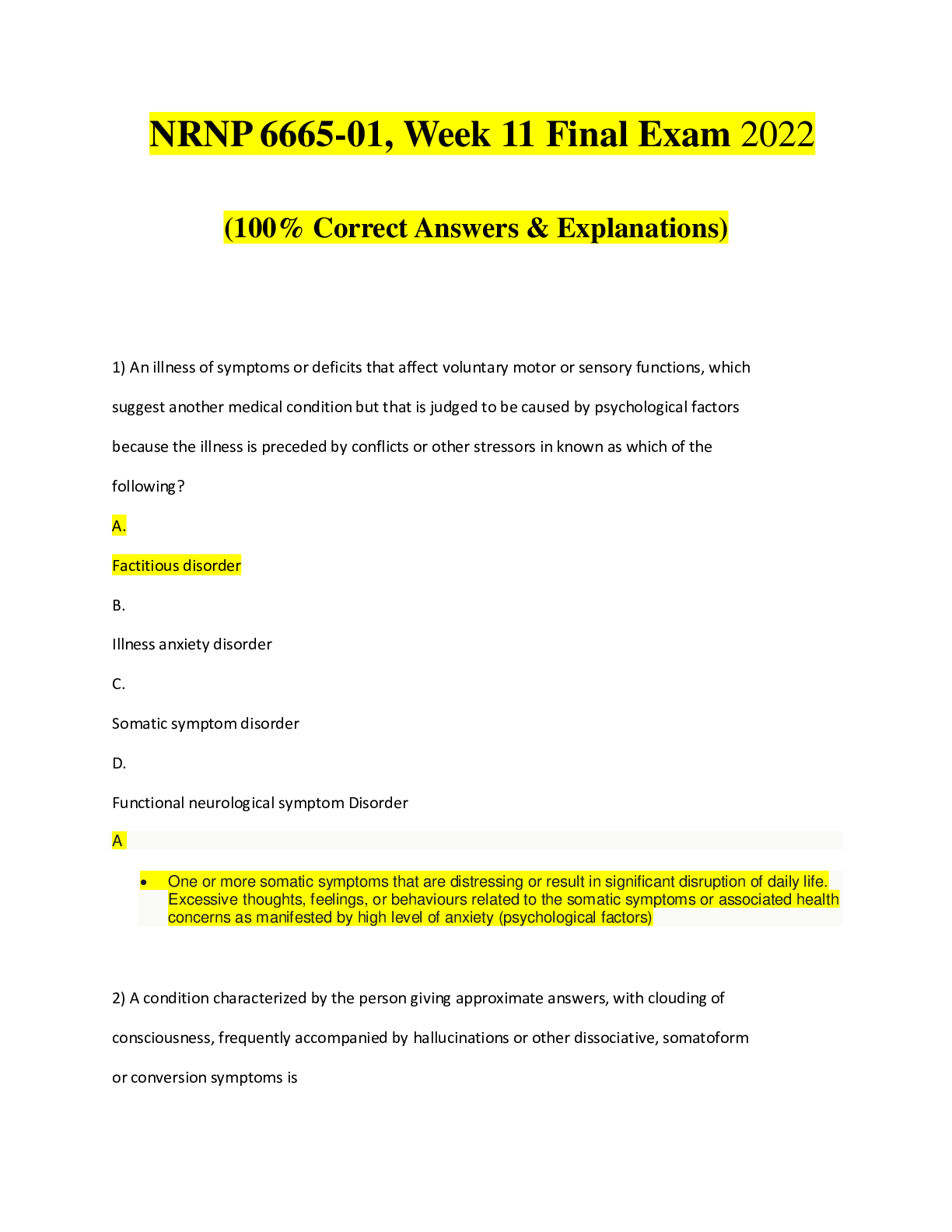
.png)
.png)

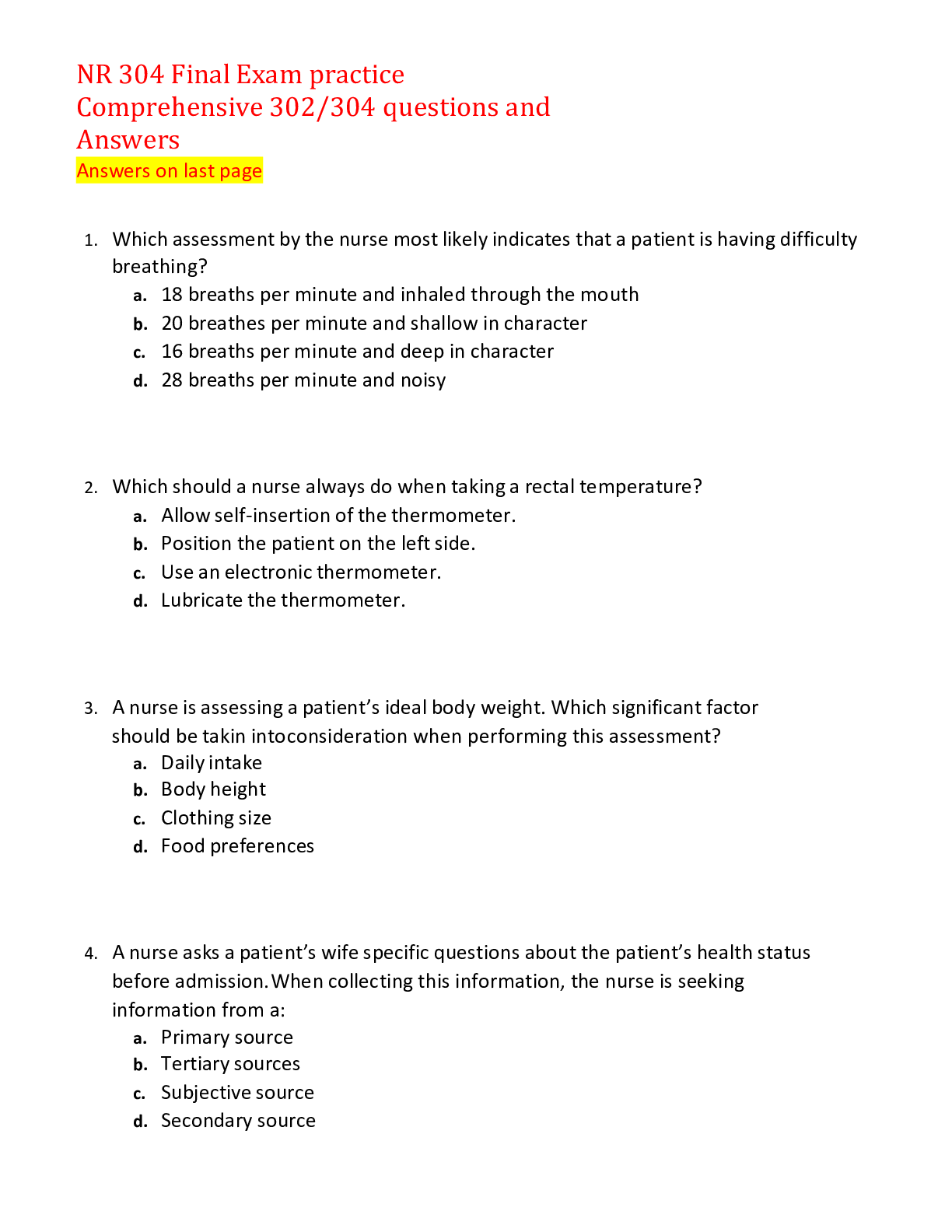
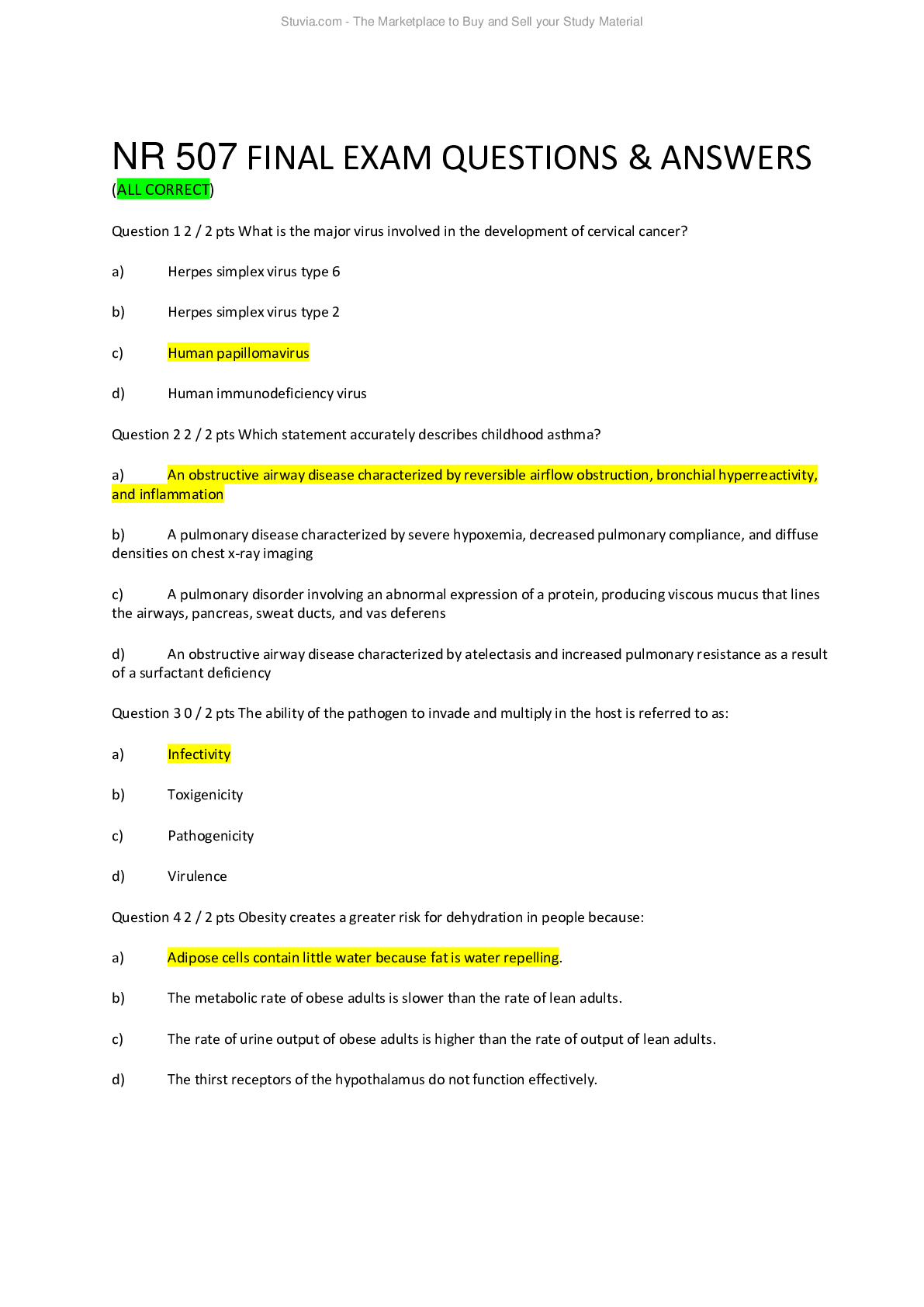
 (1)_removed.png)
_removed.png)
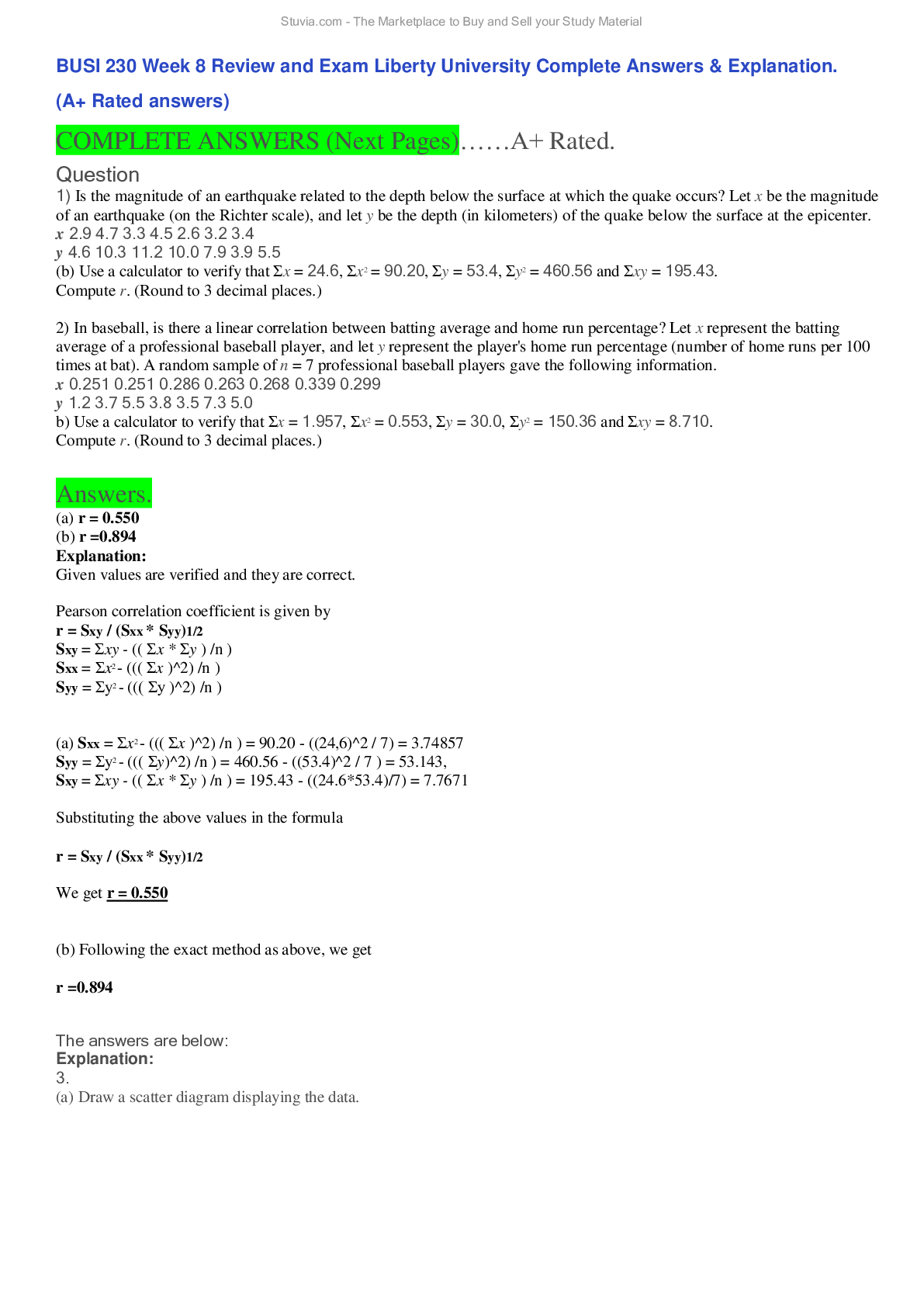
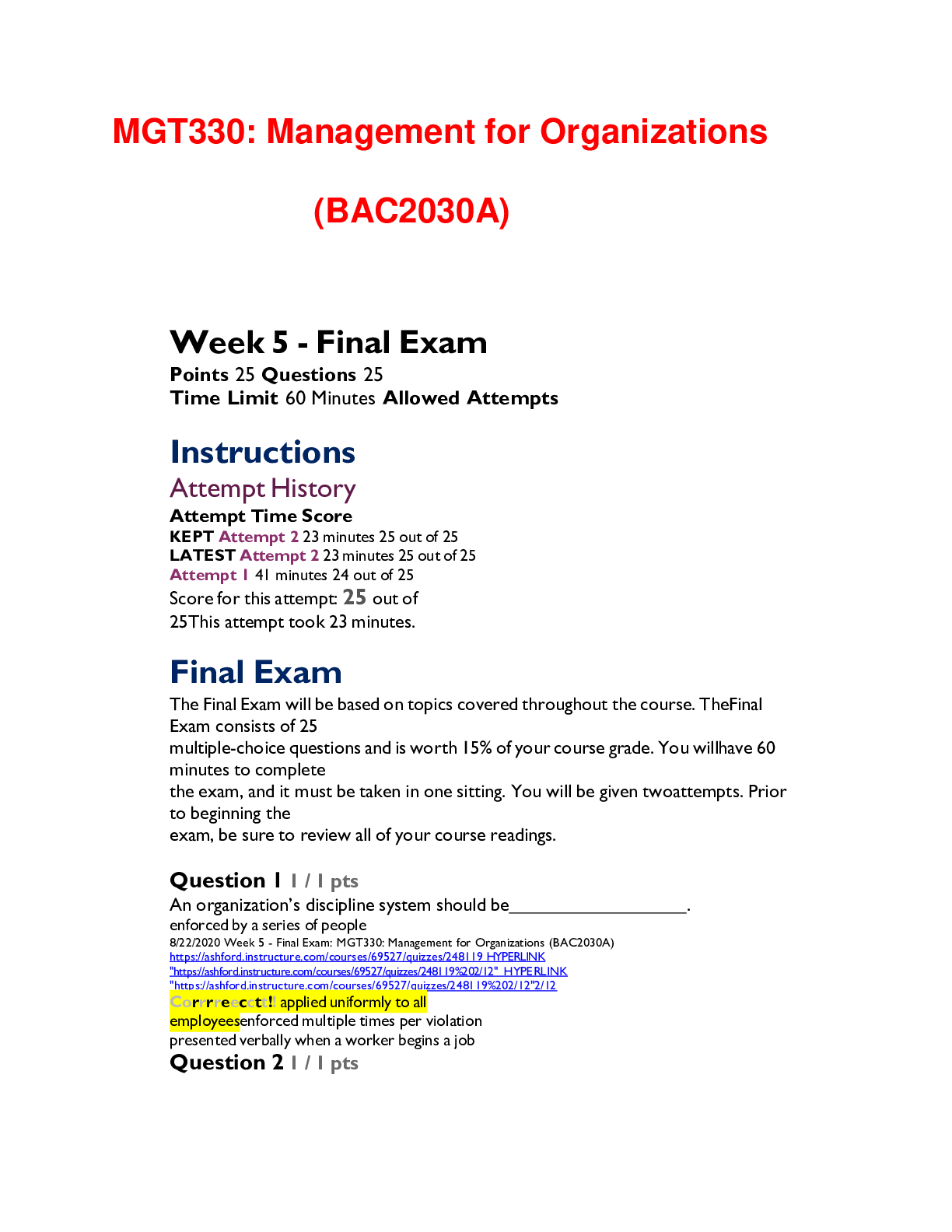
.png)


-converted.png)
